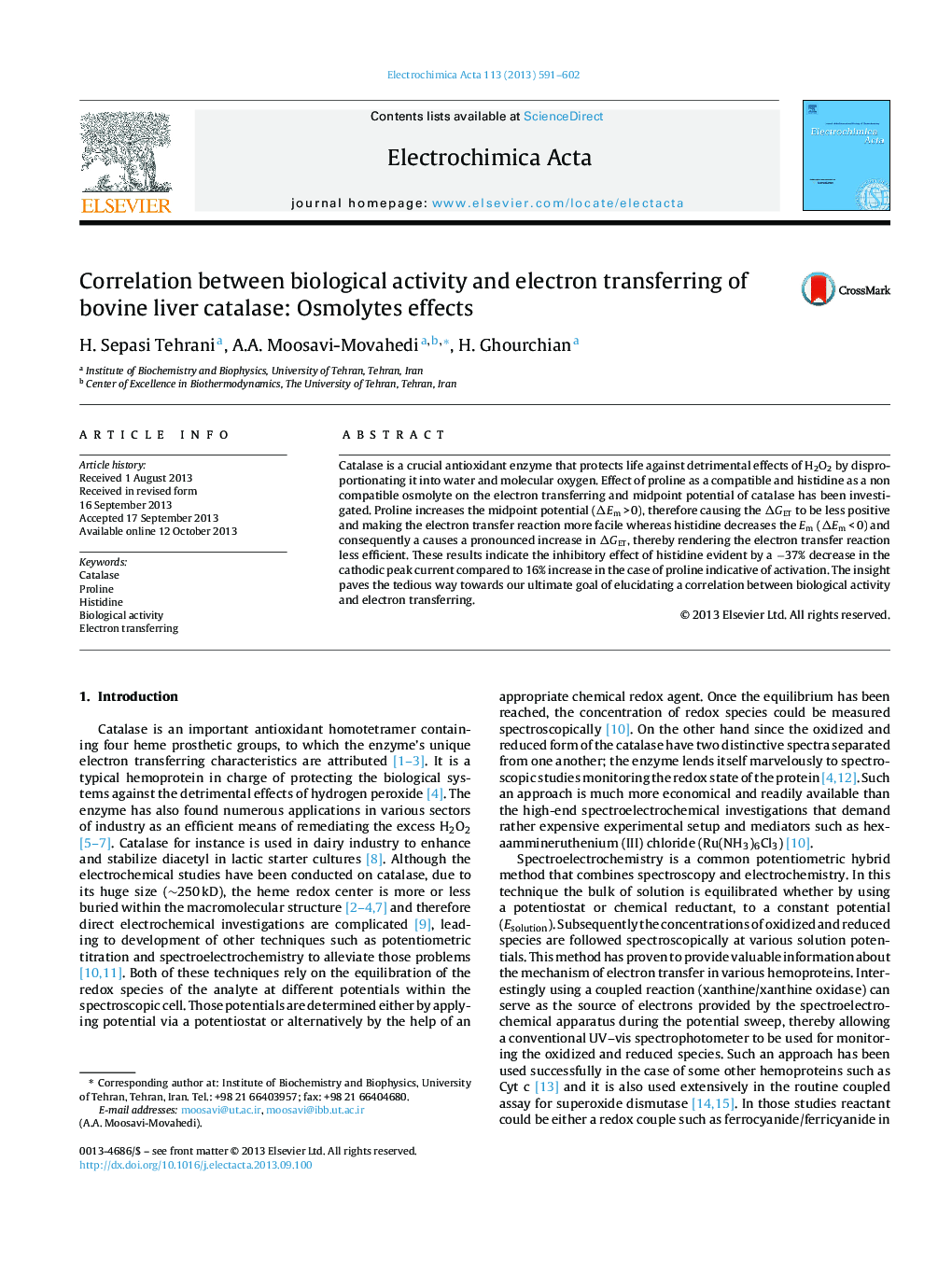| Article ID | Journal | Published Year | Pages | File Type |
|---|---|---|---|---|
| 6615072 | Electrochimica Acta | 2013 | 12 Pages |
Abstract
Catalase is a crucial antioxidant enzyme that protects life against detrimental effects of H2O2 by disproportionating it into water and molecular oxygen. Effect of proline as a compatible and histidine as a non compatible osmolyte on the electron transferring and midpoint potential of catalase has been investigated. Proline increases the midpoint potential (ÎEm > 0), therefore causing the ÎGET to be less positive and making the electron transfer reaction more facile whereas histidine decreases the Em (ÎEm < 0) and consequently a causes a pronounced increase in ÎGET, thereby rendering the electron transfer reaction less efficient. These results indicate the inhibitory effect of histidine evident by a â37% decrease in the cathodic peak current compared to 16% increase in the case of proline indicative of activation. The insight paves the tedious way towards our ultimate goal of elucidating a correlation between biological activity and electron transferring.
Related Topics
Physical Sciences and Engineering
Chemical Engineering
Chemical Engineering (General)
Authors
H. Sepasi Tehrani, A.A. Moosavi-Movahedi, H. Ghourchian,
